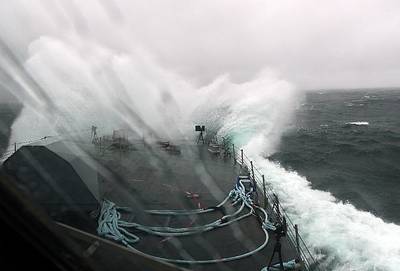LCS Variants: Development & Maturation Insights
Rear Adm. Thomas S. Rowden, Director of Surface Warfare, gives insight into the two 'Freedom' & 'Independence' LCS variant programs:
"Today, I want to provide my perspective on where we are in the development and maturation of these two ship variants, Freedom and Independence.
USS Freedom (LCS 1) and USS Independence (LCS 2) were constructed and delivered as research and development prototypes of two competing ship designs. The Navy’s intent was to determine which design was best suited for the defined requirements. Though the acquisition strategy changed, the consistent intent has been that the Navy would take the knowledge gained in the build, test and operation of these first ships to inform program changes. In some cases, the learning curve in these ships has been steep, with many of the issues highlighted in defense industry reporting and in the blogosphere. However, I can state with confidence that we have already aggressively applied lessons learned to improve the ships in production, and we will continue to do so going forward.
I find it remarkable that the two small building yards selected for production have made substantial improvements to their physical plants in the midst of this prototype and early serial production. Marinette Marine Corporation has benefited from $50 million in capital investment; AustalUSA has completed more than $150 million in capital investment. The result is the development of two small, modern and sophisticated construction yards.
Significant design changes have already been incorporated between Freedom and USS Fort Worth (LCS 3) , and between Independence and PCU Coronado (LCS 4) . Even more design changes are introduced in USS Milwaukee (LCS 5) and USS Jackson (LCS 6), the first two ships that apply the serial production processes developed in the two building yards. For example, the Navy installed buoyancy chambers to improve stability and expand the fuel efficiency and capacity in LCS 1. For LCS 3 and all follow on ships, we permanently incorporated this design change and lengthened the hull. Starting with LCS 5, we change to axial flow-type water jets, which will reduce cavitation and provide better performance with increased reliability.
In LCS 4, the Navy replaced the 5.1 meter rigid-hull inflatable boat with a seven meter rigid-hull inflatable boat. LCS 4 will be the first Independence variant with axial flow water jets for the gas turbine main engines. Axial flow water jets will be incorporated with the main propulsion diesel engines starting on LCS 6. These water jets will give us the benefits of improved performance and reliability.
These are examples of the hundreds of design change decisions already made, based upon observations and lessons learned in the first two ships. Ideally, we will plan to forward fit improvements on the production line ships first, and then back-fit existing ships with approved changes during scheduled maintenance availabilities. As we move forward, we will weigh design change recommendations carefully; it is critical to maintain a stabilized design with the planned serial production of two ships in each class per year
So where are we today?
Freedom is deployed and continues to show the flag in the U.S. 7th Fleet area of responsibility. Independence is conducting developmental testing of the mine countermeasure mission module. Fort Worth is a quarter of the way through her post-shakedown availability. Coronado is preparing for Navy acceptance trials and delivery later this summer. In short, we are through prototype development and well on our way to serial production of two ship classes.
While criticism of the LCS program remains, I wanted to take opportunity to show how the Navy remains committed to delivering and sustaining warships that are operationally ready, combat effective and cost efficient. As we gain momentum, we will take plenty of fixes and make the course corrections to ensure we are getting LCS forward, in numbers, to support our national maritime objectives. These ships provide much-needed capability, and as I indicated last week, I strongly believe that forward presence and numbers are important values in a naval force unto themselves."

















